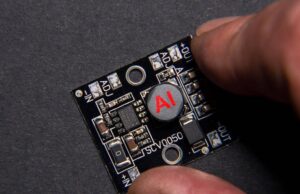Top Guidelines for RF and Microwave PCB Assembly
2022-10-21Radio frequency (RF) and microwave printed circuit boards (PCBs) have the ability to handle higher frequencies than other boards. RF and microwave PCB assembly is also considered to be one of the most reliable designs. As the advancement of technology, RF and microwave circuit boards are used in more and more scenarios.
These PCBs used to be expensive and are most commonly used in aerospace and military industrial applications.
Describe RF and microwave circuit boards
Printed circuit boards combine the complex technology of mixed and digital signal solutions. As the frequency of mixing increases, PCB design becomes more complex. We can think of RF and microwave boards as PCBs that operate at high frequencies. They typically contain components that transmit RF or microwave signals and are capable of handling signals from MHz to GHz frequencies, and are therefore capable of capturing moderate to excessive frequencies. Among the frequencies of the signals, we mention are:
Low frequency signals
50MHz
RF signals
50MHz~1GHz for AM/FM transmission
Mircowave signals
1GHz~30GHz for high bandwidth signal transmission
The normal frequency range for RF is between 500 MHz and 2 GHz, however most board designs above 100 MHz are RF PCBs. any frequency above 2 GHz is a microwave frequency.
RF and microwave PCBs
It was different from each other and are a standard circuit. RF PCBs operate with a high frequency analog signal that can be anywhere between the minimum and maximum limits. Both RF and microwave PCBs operate at a frequency by passing a signal within a specific band. Pass filters transmit signals within the band of interest while filtering out any signals outside the frequency range.
RF / Microwave PCB Assembly Design Guide
If someone needs a guide to assembling RF and microwave PCBs, they should know the basics of microwave PCBs and RF PCBs are necessary. The assembly of RF and microwave PCBs requires specific materials, parts, and techniques. The materials you assemble in such PCBs also need to be of high quality. Make sure you follow the guidelines and consider the following issues:
- Highly noise sensitive
- Component impedance matching
- Return loss
- Prevention of crosstalk
RF / microwave PCB assembly in the substrate material requirements
Selecting the best substrate material can result in reliable PCB performance, so it plays a critical role in circuit board design. In the selection of substrate materials, please consider the following matters.
- Ensure that the substrate material for RF and microwave PCBs should have a high relative dielectric constant
- Consider the temperature stability of the environment
- Thicker substrate materials
- Relative permittivity and loss angle tangent has a function of dielectric loss
Challenges for RF and microwave PCBs
Design difficulties
In the case of multilayer PCBs, it is necessary to separate different components, such as RF or digital parts and low-level analog.
Noise
RF and microwave signals are more sensitive to noise and are more susceptible to noise compared to standard PCBs. Different types of noise can include white noise, pink noise or band-limited noise, as well as thermal noise, scattered particle noise, phase noise, flicker noise and avalanche noise.
Temperature control
Fluctuations in temperature levels is another issue to consider, temperature changes can affect the material properties of the printed circuit board.
Reliability
When working at extreme temperatures, the reliability of the plated through holes (PTH) used for interconnecting layers is an issue.
Explore KingPCB's services
KingPCB's experts can help you with RF PCB fabrication and assembly services that meet your application requirements and budget, while maintaining top quality control and tight lead times.
One of our primary focuses is on high-frequency PCB laminates, so you can trust our expertise in mechanical, electrical, and thermal PCB characterization.
Want get a quote on your PCB project? Contact us now to get more information!




